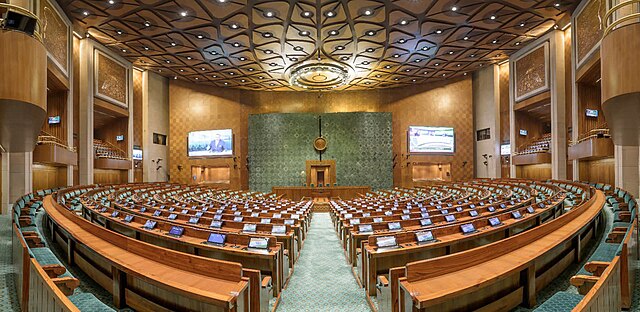The 12th Lok Sabha, was constituted after the 1998 Indian general election held during February–March 1998. This was the second consecutive Lok Sabha, like the 11th Lok Sabha elections that did not provide the country with a stable government. Atal Bihari Vajpayee became the 10th Prime Minister of India but the government lasted for only about thirteen months due to no clear mandate. Also, the party was not able to get support from other parties, after the withdrawal of support by AIADMK. After his resignation, then President K. R. Narayanan asked Sonia Gandhi, the leader of the opposition in the Lok Sabha to form the government; however, Gandhi responded that the UPA would not be able to form a government at the center, following which President Narayanan dissolved the House. The next General elections of 1999 for 13th Lok Sabha provided India a stable government that lasted for full five years. Nine sitting members from Rajya Sabha, the Upper House of Indian Parliament, were elected to 12th Lok Sabha after the 1998 Indian general election.

Old Parliament House, Sansad Marg, New Delhi, India
The Lok Sabha, constitutionally the House of the People, is the lower house of India's bicameral Parliament, with the upper house being the Rajya Sabha. Members of the Lok Sabha are elected by an adult universal suffrage and a first-past-the-post system to represent their respective constituencies, and they hold their seats for five years or until the body is dissolved by the President on the advice of the council of ministers. The house meets in the Lok Sabha Chambers of the Parliament House, New Delhi.
Lok Sabha


